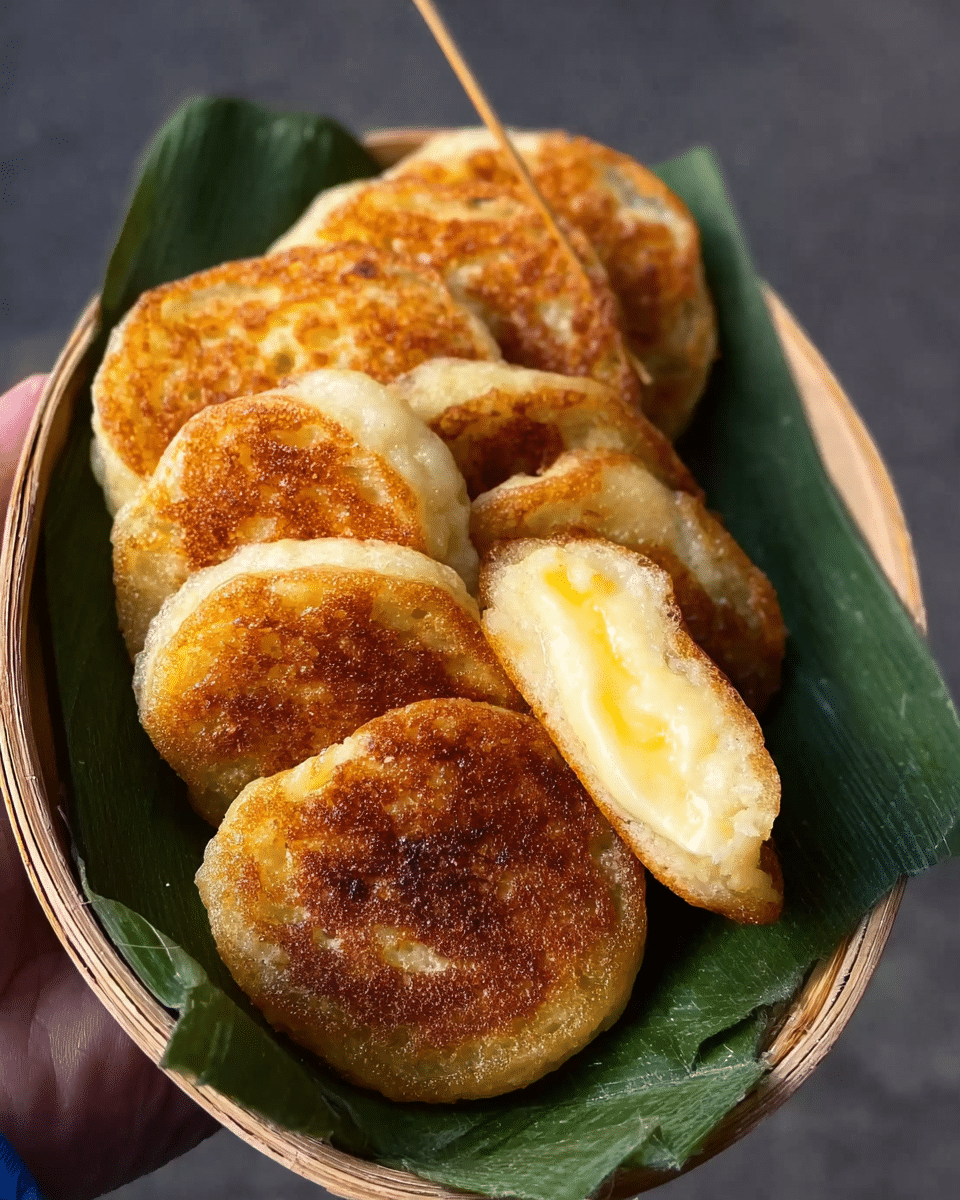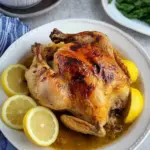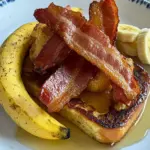A Snapshot of Thai Culinary Tradition
Kanom Krok is a popular dish in Thailand, especially enjoyed at street markets where vendors prepare the pancakes in special pans that have small, round indentations, ensuring the pancakes cook evenly on both sides. The dish is typically served warm and often accompanied by a variety of fillings, including sweet corn, scallions, or even mung beans, although the traditional version remains a basic coconut filling. The combination of sweet, salty, and savory ingredients is a hallmark of Thai cuisine, and Kanom Krok encapsulates this balance beautifully.
The origins of Kanom Krok can be traced to Thailand’s rural areas, where it was a street food staple enjoyed by locals. Over time, the dish spread across the country and became a beloved treat enjoyed by both locals and tourists alike. Whether as a midday snack or a late-night indulgence, Kanom Krok has earned its place as one of Thailand’s most iconic and accessible street foods.
The Ingredients: A Harmonious Blend of Flavors
The ingredients that make up Kanom Krok are simple, yet their flavors combine in a way that reflects the harmony found in Thai cuisine. Sweet rice flour forms the base of the batter, giving the pancakes a soft, slightly sticky texture. The rice flour is what sets Kanom Krok apart from other types of pancakes, providing that signature soft and chewy interior.
Coconut milk is another key ingredient, contributing to the pancakes’ creamy consistency and a distinct, tropical flavor that is both sweet and savory. The rich creaminess of the coconut milk balances perfectly with the sweetness of palm sugar, which is a common sweetener in Thai cooking. Palm sugar provides a deep, caramel-like sweetness, making it the ideal companion to the natural sweetness of the coconut.
Shredded coconut adds texture to the batter, enhancing the coconut flavor and providing small bursts of chewiness in each bite. Jasmine water, a fragrant floral water made from jasmine blossoms, is often used in the batter to infuse a subtle floral aroma into the pancakes, adding another layer of complexity to the flavor profile.
The Art of Cooking Kanom Krok
Making Kanom Krok at home is an enjoyable and rewarding process. While the ingredients may seem straightforward, it’s the careful attention to detail during the cooking process that ensures these pancakes turn out perfectly crispy on the outside while remaining soft and custard-like on the inside. The key is to use the right cooking technique and equipment. Traditionally, a special cast-iron pan with small, round indentations is used to make Kanom Krok, ensuring that each pancake is the perfect size and cooks evenly. However, you can also use a regular frying pan or griddle to cook the pancakes.
The cooking process begins with heating the oil in the pan to the right temperature. Once the oil is hot, spoon the batter into the pan, forming small, round pancakes. As the pancakes cook, they will begin to crisp up on the edges, while the middle remains soft and tender. The challenge is to cook them long enough to achieve a golden-brown, crispy exterior without overcooking the batter. This requires patience and a watchful eye, but the reward is a perfect batch of Kanom Krok pancakes.
Once cooked, the pancakes are traditionally served warm, either on their own or accompanied by a side of fresh vegetables or fruit. In Thailand, vendors often serve them on small paper plates with a side of sweet chili sauce or tamarind sauce, which complements the sweetness of the pancakes with a bit of tanginess and heat.
Serving and Pairing Kanom Krok
Kanom Krok is versatile and can be served as a snack, breakfast, or dessert. In Thailand, it’s often eaten as a midday snack or breakfast treat, enjoyed alongside a cup of strong Thai iced tea or freshly brewed coffee. The crispy, coconut-filled pancakes are the perfect complement to the rich, sweet flavors of these beverages. The combination of the warm pancakes and cold drinks creates a satisfying balance, making it a delightful experience for the senses.
While Kanom Krok can be enjoyed on its own, it also pairs wonderfully with a variety of side dishes or dipping sauces. A side of fresh fruit, such as mango or papaya, can provide a refreshing contrast to the richness of the pancakes. Alternatively, a tangy dipping sauce made from tamarind, lime, and chili can provide a zesty kick that enhances the sweetness of the pancakes.
For those who prefer more savory flavors, Kanom Krok can be topped with savory fillings such as green onions, corn, or even minced pork. These savory additions turn the dish into a more substantial snack or appetizer, while still retaining its signature coconut flavor. This versatility makes Kanom Krok suitable for a variety of occasions, from casual snacks to more formal gatherings.
Health Considerations and Modifications
While Kanom Krok is undoubtedly a treat, there are ways to make this dish a bit healthier without compromising on flavor. By using natural sweeteners like palm sugar and coconut milk, Kanom Krok provides a more wholesome alternative to other fried snacks. Coconut milk is rich in medium-chain triglycerides (MCTs), a type of fat that may have several health benefits, including improved energy metabolism and weight management. Almond flour, a common alternative to wheat flour, provides additional protein and healthy fats, making this recipe suitable for those following a gluten-free or low-carb diet.
If you’re looking to reduce the fat content of Kanom Krok, you can bake the pancakes instead of frying them, though they may not be quite as crispy. Additionally, experimenting with low-fat coconut milk or using less oil in the cooking process can reduce the overall calorie count while still maintaining the flavor. You can also opt for a sugar substitute like stevia or monk fruit for those who need to limit their sugar intake.
Cultural Significance of Kanom Krok
Beyond its delicious taste, Kanom Krok holds cultural significance in Thailand. The dish is often prepared during special occasions and festivals, such as Songkran (Thai New Year) and Loy Krathong, where food plays a central role in celebrations. These pancakes are not just a snack but a part of Thai tradition, representing the country’s love for street food culture and the importance of sharing food with loved ones. The art of making Kanom Krok has been passed down through generations, and it remains a staple at Thai street markets, where vendors use traditional methods to make the pancakes fresh and hot, right in front of customers.
In addition to its cultural significance, Kanom Krok has also gained popularity beyond Thailand, with many restaurants and food stalls worldwide offering their own versions of this delicious dish. The global appeal of Kanom Krok speaks to the universal love for coconut-based desserts and the timeless appeal of simple, flavorful food.
Conclusion
Kanom Krok, or Thai Coconut Pancakes, is a delightful and indulgent treat that captures the essence of Thai street food in every bite. With its crispy exterior, soft custard-like interior, and rich coconut flavor, this dish offers a unique and satisfying taste experience that is sure to please anyone who loves sweet, coconut-based treats. Whether you’re enjoying them as a snack, breakfast, or dessert, Kanom Krok brings a taste of Thailand right to your kitchen. By following a few simple steps, you can recreate this iconic Thai treat and share the flavors of Thailand with friends and family. Whether served warm or at room temperature, Kanom Krok is a versatile dish that can be enjoyed on its own or with a variety of toppings and dipping sauces, making it a perfect addition to any meal or celebration.






